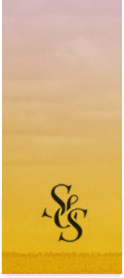The sonic work of Ted Feighan first sent us sailing back in 2010, and with each Monster Rally release since, he’s built on a sound which suggests a bent kind of exotica that feels strangely familiar yet infinitely unplaceable. It makes sense that his own collage work be pulled from a similar page of the subconscious (and it also makes sense that he be our first dreamer). The Ohio native has essentially constructed his own vibrant paradise, and he was kind enough to give us a detailed tour of it below, guided by his latest track:
It’s rare that an artist can work so fluidly within multiple art forms but the methods you use—cutting up magazines and chopping samples—are so congruous they appear inseparable. When you have an idea for a piece, how do you decide whether to construct it out of paper or from sound? Does an image ever influence a song or vice versa?
When I first started making music (as Monster Rally), the images on the records I was buying influenced the music a great deal. I would always try to make music that I thought the people in the album covers would be listening to. Most of the records I was buying were tropical / exotica LPs and so the cover images ended up dictating the recordings. I started applied this concept to the visual art that I was making, only I did it in reverse order. I starting making images that I thought represented the music I was making. For example the album art for Coral was an illustration of the bizarre world in which the music from the album existed.
When I’m starting a collage I’ll usually begin by having a base image, typically some open space with maybe a few existing elements. I’ll then take cut paper pieces that I’ve already cut out and start creating a scene within this space.
Sample based music and collage are both arts of selection, destruction and assemblage, how do you go about choosing what types of material to work with? Where did your interest in “exotica” arise from?
This concept of discovery and selection is what interests me most of both with collage and sample-based music. I love the act of searching for and finding elements that are going to inspire me and guide me into chaining them. Both processes start off in the same way, going to thrift stores or record stores and just digging through as much as I can. I tend to pick records solely based on cover art that I find interesting. When I’m looking for collage materials, I am looking for a very specific quaility in the photos, just the right texture and coloring.
My interest in Exotica started about 5 years ago when I started collecting records. I would buy albums based on the cover art and the art that I found most appealing was tropical / world music themed LPs, roughly from the mid 50s to the late 60s. The record that started my interest was Quiet Village by Martin Denny. The cover of that album has a woman in the jungle hanging out on some kind of bamboo fort, its almost too awesome. After that I just keep collecting all the records that looked interesting to me and I always intended to sample them but it wasn’t until almost three years later that I actually bought an SP 303 and started making music out of them.
Collage is one of my favorite techniques because it presents you with the ability to reshape what has already had many past lives. An instant in time becomes film becomes photograph becomes printed mass media, each time disassociating further from its original form. Collaging allows you to perpetuate this cycle but the new context is yours to shape. With your art, what new worlds are you aiming to create?
I completely agree, my favorite element of collage is the aspect of taking something, and by placing it in a new context, creating an entirely new meaning. I like to take people who may have been unimportant in their original form and make them primary characters in a new composition. The worlds I’m attempting to create are at the same time familiar and surreal. I want the viewer to be able to picture them selves within one of my scenes, but not to be too comfortable there.
Thanks Ted!





